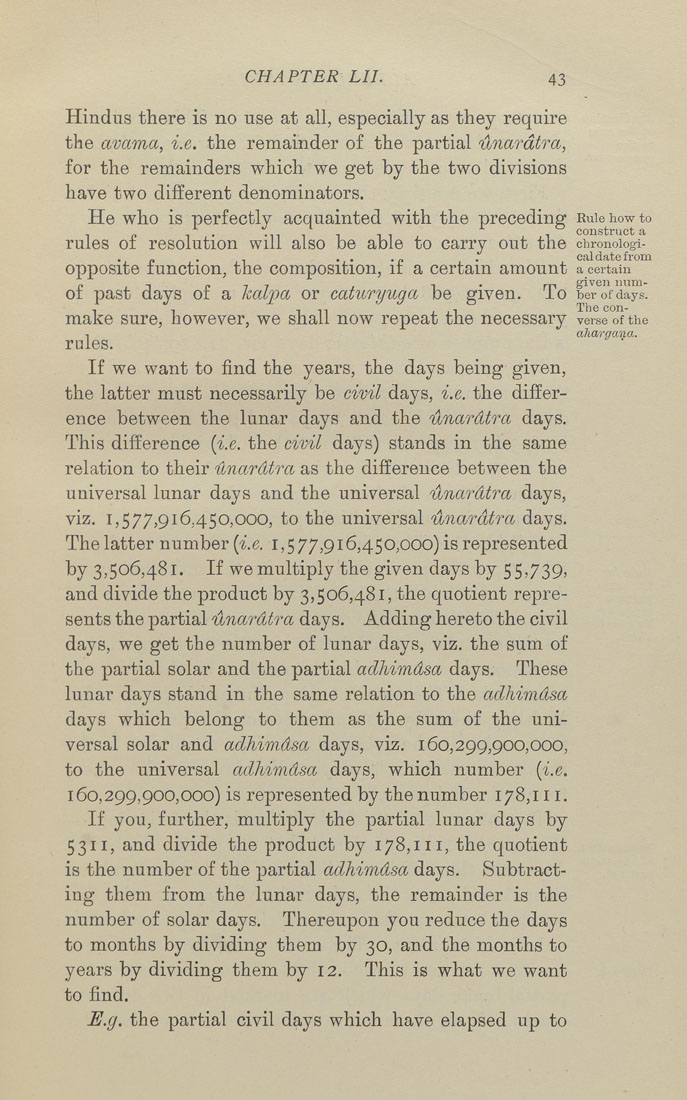CHAPTER LII. 43
Hindus there is no use at all, especially as they require
the ctvctma, i.e. the remainder of the partial ilnardtra,
for the remainders which we get by the two divisions
have two different denominators.
He who is perfectlv acquainted with the preceding Rule how to
construct a
rules of resolution will also be able to carry out the chronoiogi-
„ . , ...» . cal date from
opposite function, the composition, it a certain amount a certain
of past days of a kalpa or caturyitgct be given. To berofdays.
make sure, however, we shall now repeat the necessary verse of the
■, ahargana.
rules.
If we want to find the years, the days being given,
the latter must necessarily be civil days, i.e. the differ¬
ence between the lunar days and the ilnardtrct days.
This difference [i.e. the civil days) stands in the same
relation to their unctrdtrct as the difference between the
universal lunar days and the universal ilnctrdtra days,
viz. 1,577,916,450,000, to the universal iXnardtra days.
The latter number (-i.e. 1,577,916,450,000) is represented
by 3,506,481. If we multiply the given days by 55,739,
and divide the product by 3,506,481, the quotient repre¬
sents the partial Unardtra days. Adding hereto the civil
days, we get the number of lunar days, viz. the sum of
the partial solar and the partial adhimdsa days. These
lunar days stand in the same relation to the ctdhimdsa
days which belong to them as the sum of the uni¬
versal solar and adhimdsa days, viz. 160,299,900,000,
to the universal adhimdsa days, which number (t.e.
160,299,900,000) is represented by the number 178,111.
If you, further, multiply the partial lunar days by
53II, and divide the product by 178,111, the quotient
is the number of the partial adhimdsa days. Subtract¬
ing them from the lunar days, the remainder is the
number of solar days. Thereupon you reduce the days
to months by dividing them by 30, and the months to
years by dividing them by 12. This is what we want
to find.
E.g. the partial civil days which have elapsed up to
|








